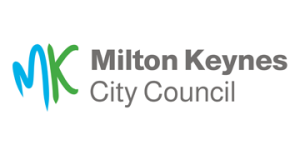Reflections on my work with bilingual children

Growing up in a Nigerian home I was accustomed to my parents speaking in pidgin English and quickly adjusted to the need to use standard English in school.
Although I wouldn’t consider myself bilingual, I’ve been fascinated by the impact of culture and language on an individual’s identity. This is something that I’ve considered at different points of my career. I have worked in a mixture of rural and inner-city regions and supported bilingual children and young people (CYP).
Understanding bilingualism
This collection of personal and professional experiences was the impetus for attending a workshop about ‘bilingualism’ which was aimed at EPs and facilitated by Dr Fraser Lauchlan. I cannot recommend it highly enough and feel it was a useful way of considering recent research, learning from Fraser’s wealth of experience and engaging in problem solving discussions with colleagues from different Local Authorities.
16% of children and young people in LA schools are known or believed to use a language other than English (Safford & Drury, 2013). This is why Lauchlan (2014) suggests that EPs should have a good understanding of the issues involved when working with bilinguals. From considering their choice of assessments, interventions, to their communication with parents and recommendations they give when providing professional advice.
There is some debate about the definition of bilingualism however Bialystok (2001) suggests that bilingualism describes “those who are able to function equally in two languages, move effortlessly between them, and adopt the appropriate sociocultural stance for each”.
More recently, Lauchlan (2014) outlined the term bilingualism as describing children who have been exposed to two languages from birth, or from a very young age; children who have been raised by parents who speak two languages; as well as those who have one language in the home and a different language at school.
The benefits of bilingualism
The key consideration is for EPs to facilitate CYP’s ability to achieve “balanced bilingualism” whereby, they have the same level of proficiency in both languages.
Some of the current research in bilingualism challenged some of my assumptions and helped me to understand the benefits of bilingualism. Lauchlan (2014) highlights several cognitive and linguistic advantages. For example, bilinguals demonstrate strengths in their inhibitory control and selective attention. Bilinguals performed significantly better than monolingual peers on non-verbal reasoning and arithmetic tasks (Lauchlan et al., 2013). Strengths have also been outlined in bilingual’s problem-solving abilities and creative thinking (Clarkson, 2006; Ricciardelli, 1992).
Yip & Matthews (2007) indicate that bilinguals have ‘metalinguistic awareness’ i.e. better understanding of language and its grammatical structures. Bilinguals also experience conceptual transfer, where their knowledge of a concept in one language can be used to help them understand a similar concept in another language (Lauchlan, 2014).
Another key point of reflections for me was how a child’s socio-economic status can have a negative impact on the rate of language and cognitive development. However bilingualism does not exacerbate this impact (Lauchlan, 2014).
EP work with bilingual children and young people
In terms of assessment tools, the use of dynamic assessments is recommended. This outlines children and young people’s potential for learning which can inform interventions e.g. appropriate differentiation of the curriculum in terms of level, pace and delivery. It is also important for EPs to assess bilinguals in their strongest language i.e. if they are not yet a balanced bilingual. In practice I have used an interpreter to support my assessments when needed and the BPS (2017) guidance on the use of interpreters has been useful.
As EPs we are uniquely positioned to share the strengths of bilingualism particularly to parents who may feel their child is disadvantaged by having an additional language. Some key things I have learnt are that bilingualism does not exacerbate learning difficulties, language impairments or Autism. Lauchlan’s (2014) theory of mind research indicated that bilingualism can enhance children’s flexibility of thinking and helps them consider other perspectives.
My learning about bilingualism has impacted my practice as an EP by ensuring that I work in close partnership with other agencies. For example, I now understand that monolingualism should only be considered as part of a multi-agency approach. I try to encourage good communication between home and school to ensure that children, young people and parents are central to the decision-making process (DfE, 2015). I acknowledge school and parental concerns whilst reframing negative assumptions held about bilingualism. I explore the possibility of SEN, using strength-based assessment tools that provide more than a partial or biased picture.
I try to develop children’s positive identity as a bilingual by encouraging schools to promote the value of home language. I also understand the need to work systemically with schools to encourage all staff to view bilingualism as a resource and not a ‘problem’.
References
Bialystok, E. (2001). Bilingualism in development: Language, literacy, and cognition. Cambridge University Press.
BPS (2017) ‘Working with Interpreters: Guide for Psychologists’ accessed on 28/06/2020
DfE, D., 2015. SEND Code of Practice 0–25 Years. London: Department for Education, Department of Health, pp.216-229.
Lauchlan, F., Parisi, M. & Fadda, R., (2013) ‘Bilingualism in Sardinia and Scotland: Exploring the cognitive benefits of speaking a ‘minority’ language’. International Journal of Bilingualism, 17 (1), pp. 43-56.
Fraser, L. (2014). The nature of bilingualism and implications for educational psychologists.Educational & Child Psychology, 31 (2), pp. 8-20.
Ricciardelli, L.A. (1992). Bilingualism and cognitive development in relation to threshold theory. Journal of psycholinguistic research, 21 (4), pp. 301-316.
Safford, K. & Drury, R. (2013) The ‘problem’ of bilingual children in educational settings: Policy and research in England. Language and Education, 27 (1), pp. 70-81.
Yip, V. & Matthews, S. (2007) The Bilingual Child: Language Contact and Early Development (Cambridge Approaches to Language Contact). Cambridge: Cambridge University Press




